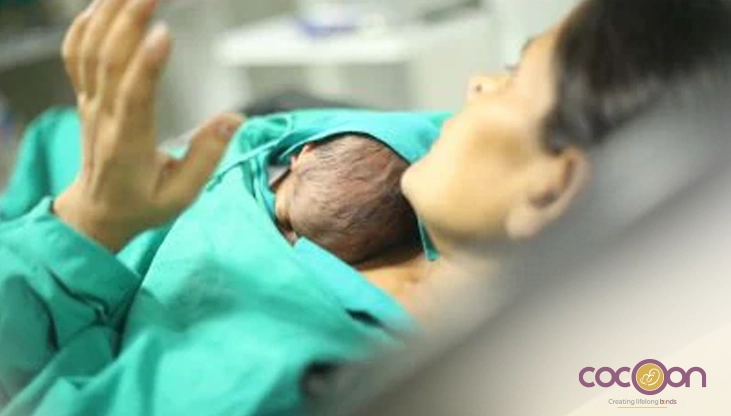Congratulations on reaching the final stage of your pregnancy! As your baby’s arrival approaches, you may be considering your delivery options. Choosing between natural birth and a C-section is a significant decision, one that should be made in consultation with your doctor, taking into account your circumstances and medical history.
At this stage, your obstetrician will discuss both options with you. Understanding the benefits, risks, and what each method involves can help you make an informed decision. In this article, we will provide essential information about both natural childbirth and C-section delivery, so you can have a productive conversation with your doctor. Let's take a closer look.
What is the Difference between Natural Birth and C-Section Birth?
The major difference between natural and c-section birth is the mode of delivery. During a C-section, the baby is delivered through an incision in the abdomen or uterus. On the other hand, the baby is born through a birth canal during natural or vaginal delivery. Some other differences include:
Duration of Labour
The duration of labour may also vary significantly between the two methods, especially in the case of a planned C-section. The labour during a C-section often lasts up to 45 minutes to an hour while it may last up to 12-14 hours in case of natural birth.
Recovery Time
A complete recovery after a C-section takes about 6-8 weeks and may also require a hospital stay for a longer time. On the other hand, complete recovery after vaginal birth is up to six weeks with a shorter hospital stay.
Level of Pain
Although pain is subjective, C-section involves little to no pain as the baby is born under anaesthesia. The recovery after a C-section, however, may be more painful compared to that of natural birth.
Why Should You Opt for a C-Section?
You can opt for a C-section, if:
1. You are expecting multiple pregnancies.
2. Your baby is in the bottom-first or breech position.
3. ou have had a C-section before.
4. The placenta is blocking the opening of your uterus called placenta previa.
5. You have health issues that can make vaginal birth unsafe including diabetes, high blood pressure, and so forth.
What Happens During a C-Section?
C-section is a surgical procedure in which the surgeon cuts through the lower abdomen and uterus to deliver the baby. The surgery can be performed under regional or general anaesthesia depending on your preference and as suggested by the surgeon.
An elective C-section is mostly done a week before the expected date or when the surgeon sees no complications. Although elective C-section is a viable and safe option, it may still involve certain risks and complications related to surgery. In case of a medical emergency, however, a C-section should be preferred.
Why Should You Opt for a Natural Birth?
Vaginal or natural birth is often a safe and healthier option for a lot of women. With a vaginal birth, the mother has:
1. A lower risk of postpartum infection.
2. A reduced risk of needing a blood transfusion.
3. A lower risk of uterine scarring.
What Happens During Natural Delivery?
Natural or vaginal delivery goes under 3 stages depending on the widening of the cervix. The first stage refers to the initial sign of delivery which is marked by dilation of the cervix up to 10 cm. At this stage, your obstetrician may ask you to push (if the baby is normal during the initial evaluation). The second stage is marked by the crowning of the baby. When a baby’s head is visible at the vaginal opening, it is called crowning. The last and final stage is marked by the delivery of the baby. It is the stage at which a mother’s placenta is expelled and the baby can be seen.
After natural delivery, your obstetrician may suggest a hospital stay for up to 48 hours or longer depending on your and baby’s condition. Slight vaginal bleeding after delivery is normal and the body begins to heal in the upcoming weeks.
To Sum It Up
Deciding between a natural and C-section delivery is a personal decision. Each type presents pros and cons that should be carefully discussed with your doctor. Make sure that you also discuss the consequences of your choice on your future pregnancies. It has often been seen that vaginal delivery after C-section is difficult. Hence, make sure that you weigh up the pros and cons and decide the best choice for you and your child.
Frequently Asked Questions
1. Which is better? C-section or natural birth?
In normal circumstances, a natural birth is safer than a C-section for both the mother and the baby. However, in some cases, a C-section may be safer owing to the possible risk to the mother and baby.
2. Why is C-section better than natural delivery?
While vaginal birth is safer, C-sections may be better than natural delivery in case of multiple pregnancies, previous C-sections, placenta previa, high blood pressure, and so forth.
3. How Long Does Pain Last During Natural Delivery?
Although natural delivery can be painful, the contraction may last up to 60 to 90 seconds.

















